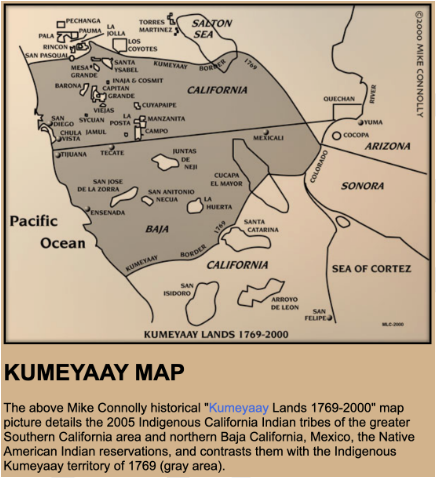At the Asian Culture and Media Alliance, we acknowledge that our work takes place on the ancestral land of the Kumeyaay people. We humbly recognize the deep and enduring connection that the Kumeyaay Nation has to this land and their ongoing stewardship of these territories for thousands of years. We pay our respects to the Kumeyaay elders, both past and present, and express our gratitude for their wisdom, resilience, and cultural contributions.
As we continue our endeavors to promote arts and culture, we do so with a commitment to honoring the Kumeyaay people and supporting their aspirations, sovereignty, and right to self-determination. We strive to work in solidarity and foster mutual understanding as we build relationships with Indigenous communities and strive for a future that respects the histories, cultures, and traditions of First Nations peoples.
 What is a Land Acknowledgement?
What is a Land Acknowledgement?
A Land Acknowledgement is a formal statement that recognizes and respects the indigenous peoples as traditional stewards of the land on which the Museum resides and works. A Land Acknowledgement recognizes the enduring relationship that exists between indigenous peoples and their traditional lands. This is an act of conciliation that makes a statement recognizing the traditional land of the indigenous people who have called and still call the land home before and after the arrival of settlers. These statements do not exist in past tense or outside historical context. Colonialism is an ongoing process and we need to build our mindfulness of our present participation. Land Acknowledgements are commonplace and even policy in countries such as New Zealand, Australia, and Canada and among Tribal Nations in the U.S.
Why are Land Acknowledgements important?
A Land Acknowledgement recognizes the displacement of Indigenous peoples and the devastating effect that forced relocation has had on these communities. They are a way to express gratitude, respect, and appreciation to Indigenous peoples and are a simple, powerful step towards correcting the stories and practices that erase Indigenous people’s history and culture. Additionally, a Land Acknowledgement encourages individuals to think about what it means to occupy space on Indigenous lands and is an educational opportunity for those individuals who may have never heard the names of the tribes that have and continue to live on the land they are standing on.
Resources
Land Acknowledgement: You’re on California Indian Land, Now What? California Indian Culture and Sovereignty Center at CSUSM
What is a Land Acknowledgement? The Division of Diversity and Innovation at San Diego State University
Honor Native Land: A Guide and Call to Acknowledgement U.S. Department of Arts and Culture
